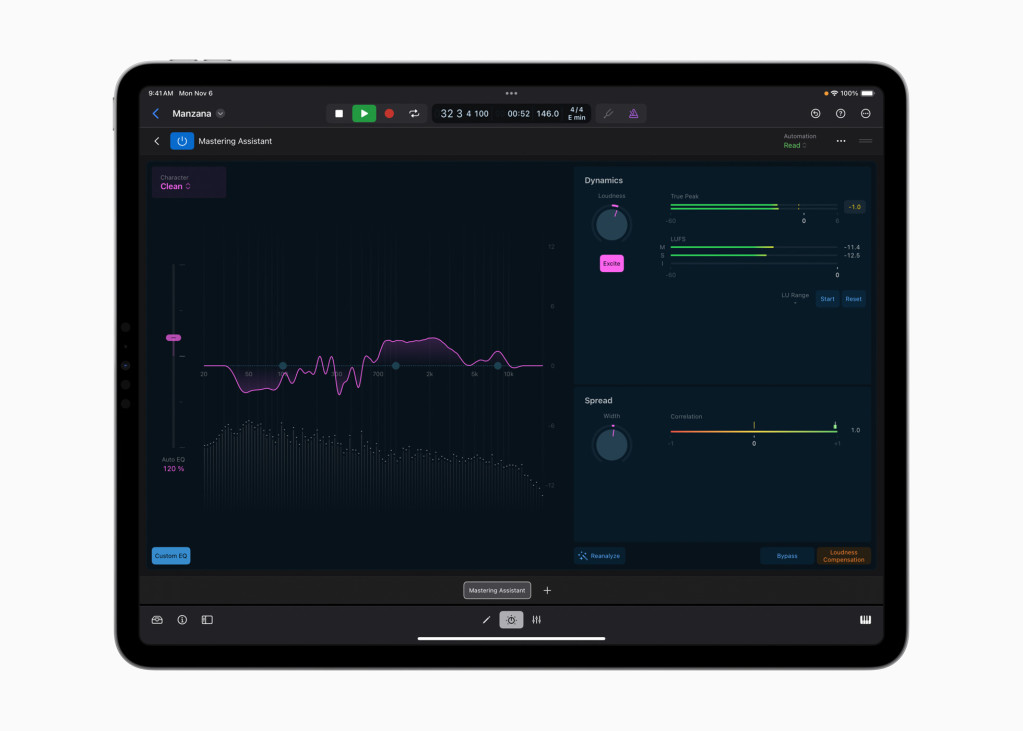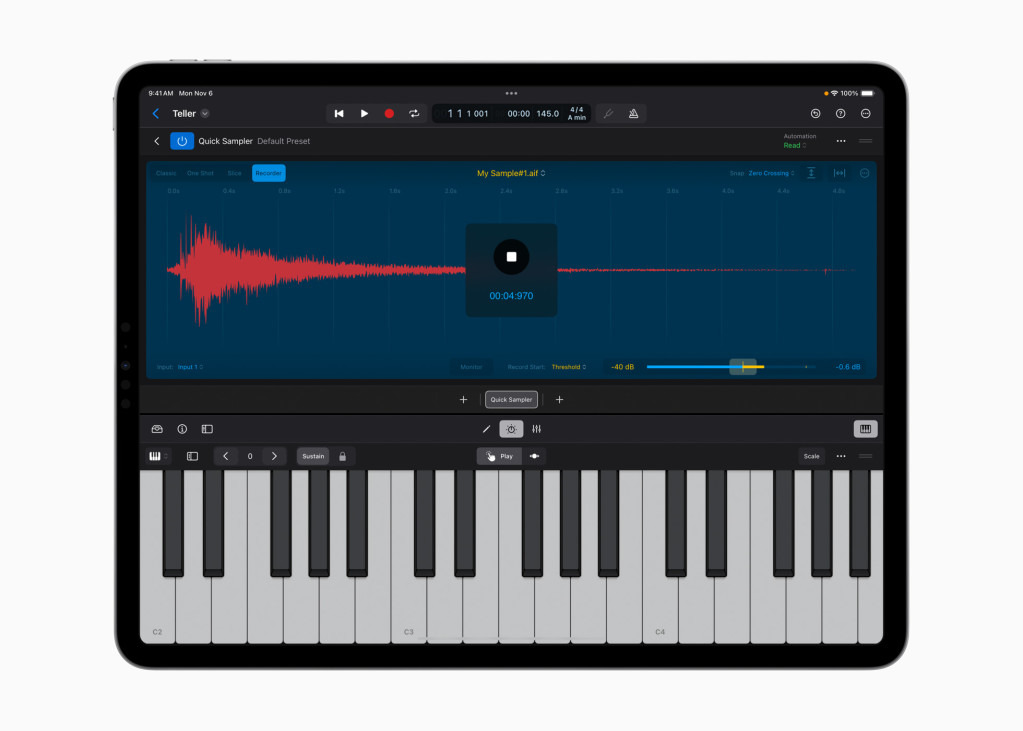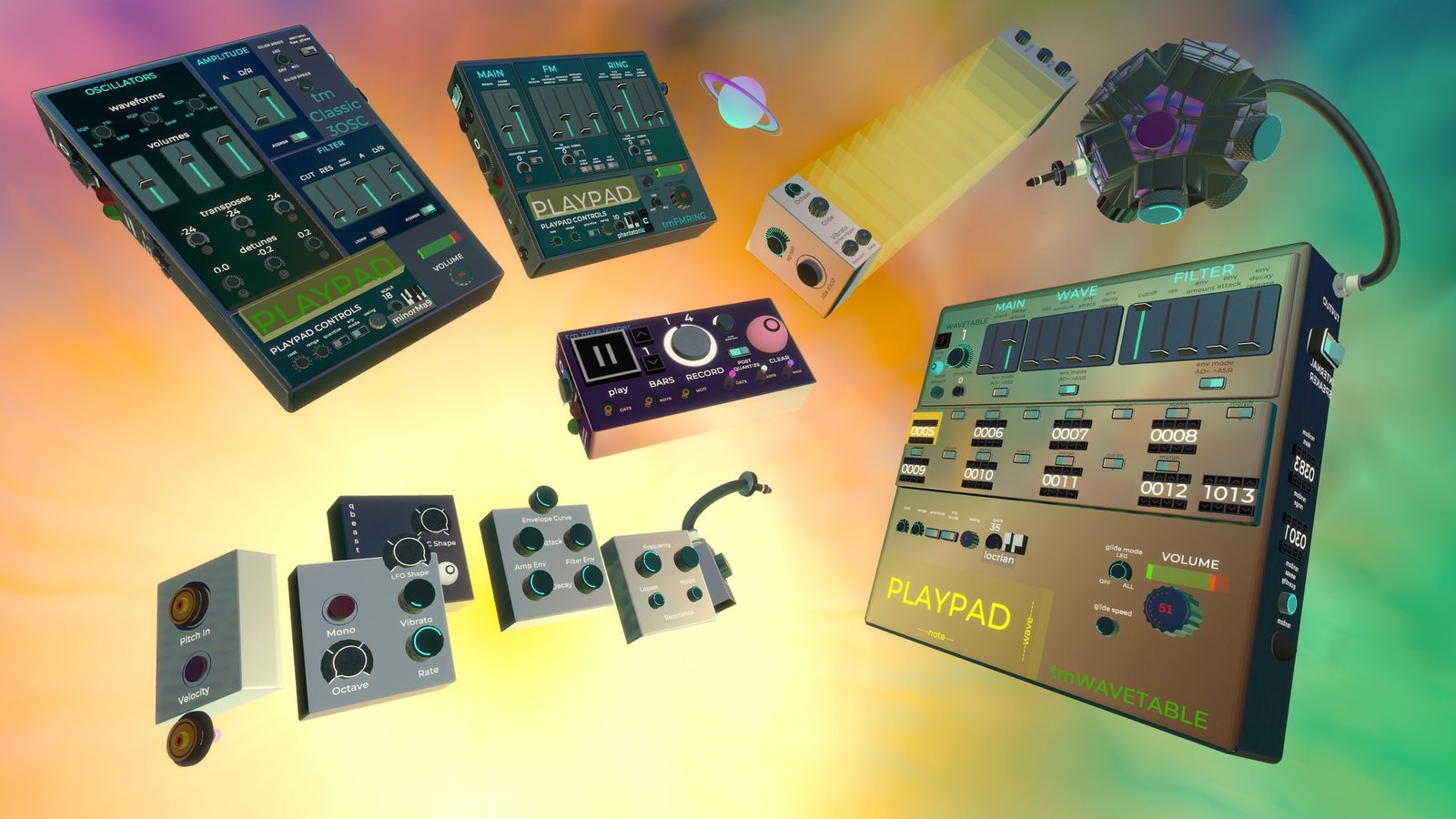In a big synchronized release, Logic Pro for Mac 10.8 and Logic Pro for 1.1 both dropped today. That’s a jam-packed iOS update, new features on both Mac and iPad, and a lot of the new iPad features migrating as expected to the Mac. The upshot: Mac users also benefit from some of the iPad action, even if you’re sticking with the desktop version.
Pricing is the same: both are free updates, Logic is $199.99 for macOS (with a free trial available), and US$4.99 a month or $49 per year on iPad. The Mac version requires macOS 12.3 or later. Logic for iPad works on any iPad with the A12 Bionic chip or later and iPadOS 16.4 or later.
New features across both versions
The 10.8 / 1.1 release really seems to be more about bringing Logic for Mac up to speed with the iPad and doing a lot of work on that iPad version, but you do get some all-new features on both macOS and iPadOS.

Mastering Assistant. This is an all-in-one plug-in for analyzing and tweaking your final sound, through a combination of dynamic processing, spectral shaping/EQ, and stereo spread. Interestingly, they don’t say this is AI or machine learning, so it may be some more other form of analysis – or else it is machine learning, and they just don’t want to advertise it as such. (More on the desktop version of LANDR in a separate story, but the interfaces are indeed really different.) I’ve asked Apple for comment on whether there’s machine learning involved.
The marketing for this one is a little opaque, but it’s clearer once you try it and check the available settings – see the manual.
- Character: clean (“transparent yet punchy”), valve, punch (aimed at rock), and transparent, each based on different gear.
- Auto EQ which seems to be an automatic match EQ feature. (This one seems almost certainly to be using AI for its analysis since you only feed it your project.)
- Loudness Compensation for matching the volume of the processed audio with the original.
- Loudness, centered at -14 LUFS-I.
- Excite (based on “vintage transformer-based console designs” of the” of the 60s-80s, Apple says).
- True Peak and LUFS metering (with M/S/I indications).
- Stereo spread and correlation.
So that’s really interesting once you dig into it. Long-time Apple users will recognize that several metering tools have been combined here, meaning you might use Mastering Assistant just for analysis and skip over some of its other features. The character modes might be related to Apple’s existing modeling features – and, presumably, represent what signal processing is used under the hood (with parameters set by the automatic analysis). Auto EQ and that single loudness control and analysis may incorporate some machine learning. The EQ and automatic dynamics analysis are both reminiscent of iZotope Ozone, which also has these kinds of character options, but in Apple’s take are a lot simpler.
I’m not sure about this yet. I might just use the metering tools and ignore the rest on the Mac.
On the other hand, on the iPad it looks like it’ll be great for making quick temporary masters while you’re working on a project – especially because while you’re on the go, getting precise dynamics isn’t really possible.
Regardless, this probably would have made the new Beatles song sound a lot better had they — (ducks, people start throwing apples – the fruit – at me…)
Also new:
32-bit recording. Blessings to Apple for saying this accurately – the reason to use 32-bit recording is not “twice” the quality of a 16-bit recording. It means simply “that you can later remove digital clipping that occurred during the recording simply by lowering the gain of the audio region, and you can increase the gain of a recording made at a low level without increasing the noise floor.” That’s it. That’s really useful, but before anyone gets carried away. (You’ll use extra storage space, which is of course at a premium on the iPad, and you’ll need hardware that supports 32-bit recording.)
New packs. Hybrid Textures, Vox Melodics. Hybrid Textures is built all around Sample Alchemy, making playable instruments out of patches and loops. Vox Melodics is a big library of vocal bits. That should be handy on the iPad, where you might want to quickly use a comp vocal which you might replace later. I mean, definitely do not sing into your iPad while you’re on a plane or bus.
New on the Mac
Three big features that I loved on the iPad version are making their way to the Mac release, which will Mac users don’t miss out on the fun – and iPad users can shuffle projects back and forth with the Mac more easily. You get:

- Sample Alchemy, the cool granular + additive + spectral sample manipulator.
- Beat Breaker, the multi-effect shuffler/slicer/scratcher.
- Slip and Rotate tools for moving audio and software instrument materials inside a region – something that’s common in video software but too often missing from DAWs.
Also in this release:
- Default region type associated with software instrument tracks
- Drummer and pattern regions now appear alongside MIDI regions on software instrument tracks
- Enhanced MIDI 2.0 support and stability
- Enhanced Hermode Tuning support. Whoa, yes, this is a fairly obscure feature, but it allows dynamic tuning support (and long-time Logic rival Steinberg Cubase also supports it). Someone who knows about Hermode Tuning could probably tell you more about the improvements or how they compare to Cubase, but I am not that person. Not yet.
- Export user-created Tuning Tables
- Accessibility enhancements, specific to playhead position, plus the ability to use VoiceOver to trigger scenes in Live Loops and announce Automation Mode and Waveform Zoom states.
- Spatial audio in the All Files Browser.
- Lots of performance improvements.
- Look at AUv2, AUv3, and Logic Pro plug-ins separately in Plug-in Manager.
Full details in the release notes.
See the overview and links to documentation in the User Guide:
What’s new in Logic Pro for Mac 10.8
Now, the big one:
New on iPad
Someone has been very busy.

- Record directly into Quick Sampler (that’s a big one, especially for on-the-go use).
- Split View and Stage Manager support.
- Drag and drop multiple audio files. That works directly from the Files app – see below. (That’s a “Split import,” technically, meaning you can drop directly into regions / locations.)
- New in-app Lessons.
- Drag sounds from the Browser to Step Sequencer.
- Copy and paste plug-in settings in Details view.
- Bypass plug-ins and sends in Setup mode in the Mixer (previously you had to switch to Mix mode).
- Edit properties and automation settings for Mixer groups.
- Drum Machine Designer can now use MIDI learn.
- Enhanced MIDI 2.0 support.
- Use Apple Pencil to toggle between function modes by double-tapping. (Hey, I wish there were support for this while using the Apple Pencil and Sidecar with the desktop version!)

But there are just a ton, a ton, a ton, a ton of fixes. Accessibility features on iPadOS are massively expanded (where they were less mature than on macOS). And just a few other settings:
- Rubber-band selection now adds to a selection with Multiple Selection mode.
- Swipe on audio Preview buttons to trigger a preview.
- Configure Mixer Groups with an Inspector.
- Use the trackpad on attached keyboards.
- AUv3 stability is improved.
- Beat Breaker’s de-click is fixed.
- Swipe to enable multiple Mixer tracks.
- Use chromatic scales in Play Surfaces.
- Drag and drop Samples and Patches onto Drum Machine Designer.
- Multi output routing for Drum Kit Designer works across all presets.
- Lots of Automation fixes.
- Tap a Plug-in Tile with Apple Pencil to bring up its details view.
Check the full release notes. Logic for iPad was a big, ambitious, seemingly impossible task; now they’ve fixed a lot of the issues with that first release.
Logic Pro for iPad release notes
And the annotated overview:
What’s new in Logic Pro for iPad 1.1
What do you think of these two updates? Let us know in comments.
And yes, this hits alongside big updates to FL Studio and Cubase and Reaper, so more on those soon. It’s obviously DAW update season.




